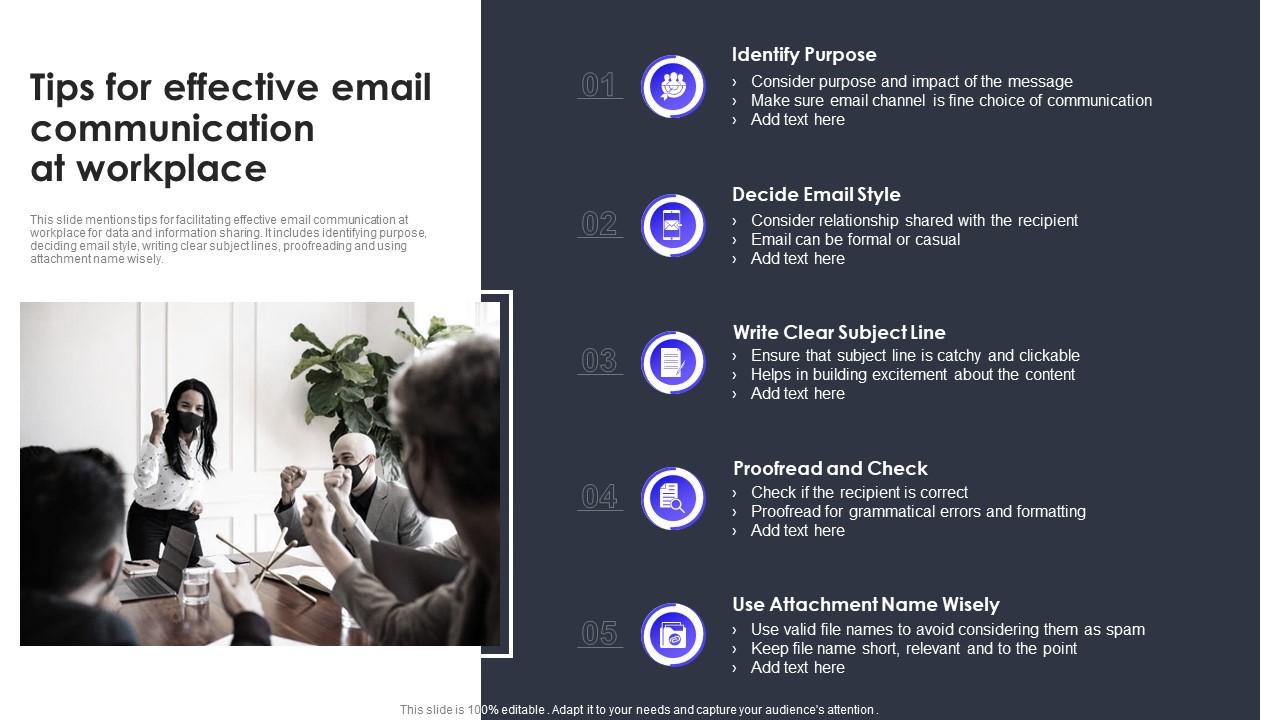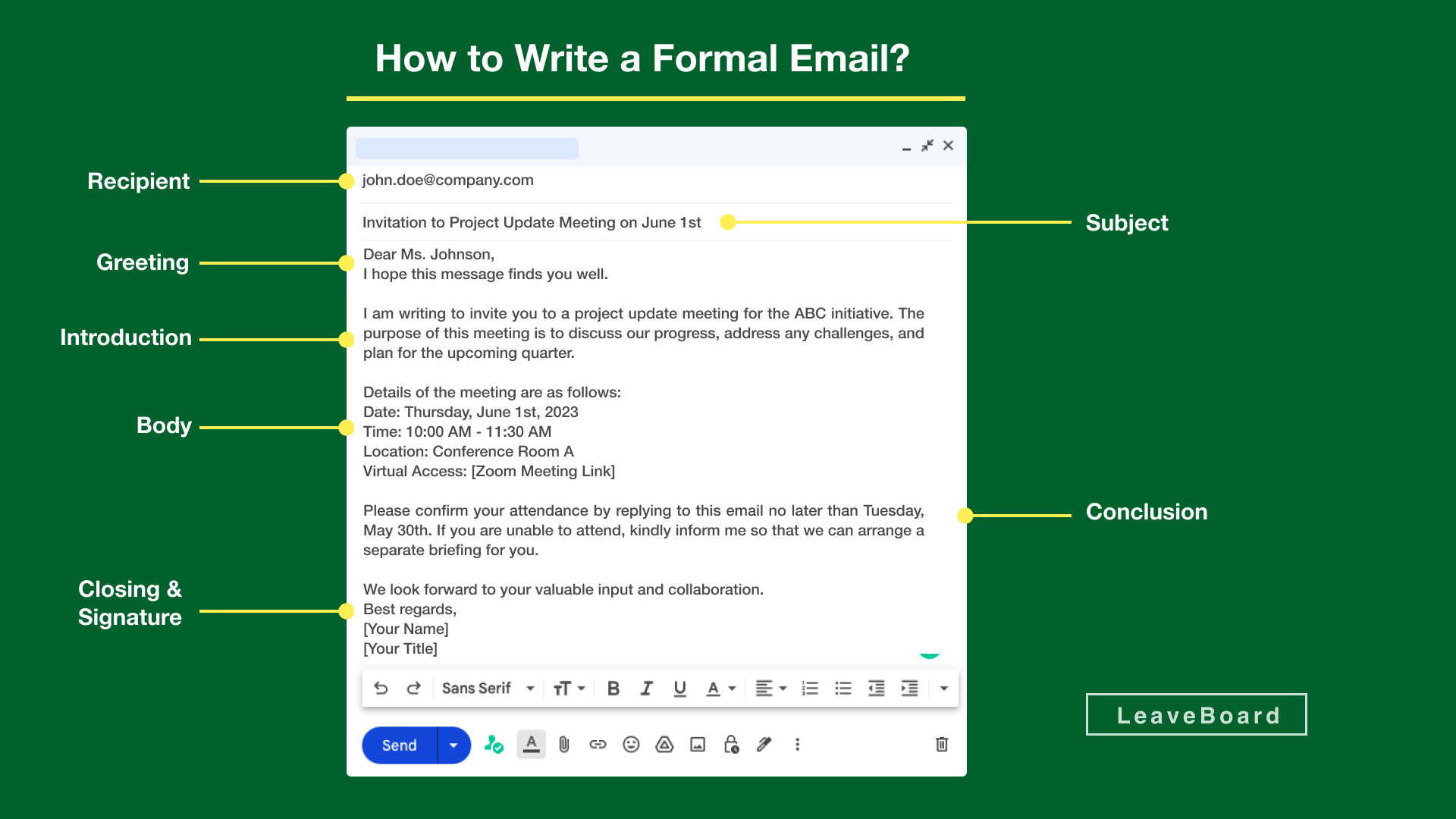
Business Email Writing Tips for Clear Communication
In our digital age, email remains a cornerstone of business communication. Like a Swiss Army knife, it’s a versatile tool, equally handy for quick messages and more detailed business dealings. Whether you’re just starting out in the professional world or are looking to sharpen your email etiquette, the following tips will guide you towards sending emails that hit the mark for clarity and professionalism.
Know Your Audience
Just as a tailor crafts a suit to fit a person, tailor your email to fit the recipient. If you’re writing to a colleague with whom you share a friendly rapport, a light, conversational tone can work wonders. But when reaching out to a senior executive or a new client, a formal and respectful approach is the golden rule. Understanding your audience helps you choose the right words, tone, and level of formality.
Subject Lines: The First Impression
The subject line is the door to your email — it should invite the reader in. Keep it short, clear, and to the point: think of it as a newspaper headline. Instead of a vague “Meeting,” write “Schedule Confirmation for Q2 Planning Meeting – May 31st.” A precise subject line prepares the reader for what’s inside and makes your email easier to find later on.
Opening With Politeness
Start your email on a positive note. A simple “Dear [Name],” “Hello [Name],” or even “Hi [Name],” depending on your relationship with the person, paves the way for a respectful exchange. If you’re writing to someone for the first time or in a formal context, opt for “Dear [Name].” But, remember to use the correct title (such as Dr., Prof., Mr., Ms.) as appropriate.
Straight to the Point
In the bustling world of business, time is precious. Make your emails concise and focused. Stick to one main idea or request per email. If you need to convey more, consider breaking it into numbered points or separate emails. This respects the receiver’s time and makes your communication easier to follow.
The Art of Clarity
Clear writing is effective writing. Use simple, everyday language to explain even the most complex ideas. Large words and convoluted sentences might seem impressive but they can muddy your message. As Albert Einstein reportedly said, “If you can’t explain it simply, you don’t understand it well enough.” Apply this wisdom to your emails.
Active Voice for Active Emails
Champion the active voice: “We will deliver your order by Tuesday,” instead of the passive “Your order will be delivered by Tuesday.” Active sentences are usually shorter and clearer because they highlight who is doing what, lending your writing both energy and precision.
Punctuation and Formatting: Less is More
In email, as in fashion, simplicity never goes out of style. Use punctuation to clarify meaning but avoid overuse that could lead to a visual mess. For example, exclamation points should be used sparingly to maintain professionalism. With formatting, it’s best to be conservative. Bullet points, bold text for emphasis, and short paragraphs improve readability, but too many colors or fonts are the quick path to an eyesore.
Professional Tone and Language
This is not the place for emojis, chat speak, or slang. Maintain a professional tone throughout. That means avoiding humor which can be misinterpreted, and staying polite even if the topic is difficult. It’s always better to have a controversial or sensitive conversation in person or over the phone.
Edit Before You Hit Send
An email filled with errors is like a business suit with stains – it simply won’t do if you want to make a good impression. Take a moment to proofread your email for grammar, spelling, and clarity. Tools like spellcheck are useful, but they’re no substitute for a careful review.
The Sign-Off
How you exit an email is as important as how you enter. It’s your last chance to leave a good impression. “Best,” “Regards,” “Sincerely,” or “Thank you” followed by your name provides a professional and polite close. Tailor your sign-off to the tone of the email; a thank-you note might end with “With gratitude,” while a standard business email might simply use “Best regards.”
Don’t Forget the Attachment
Remember the attachment! There’s nothing more embarrassing than sending an email that refers to an attachment that isn’t there. Double-check before hitting send. If you forget, a prompt apology and a follow-up email with the attachment can still save the day.
The Follow-Up
If your email warrants a response but you haven’t received one within an appropriate time frame, a polite follow-up is in order. This maintains communication momentum and shows your commitment to the matter at hand. A simple “I wanted to check in on the below,” or “Would you like any further information on this?” can do the trick.
Email Responsibly
Email is incredibly convenient, but choose wisely when to use it. Some conversations are best had face-to-face (or these days, video call to video call), particularly those that are nuanced or sensitive. Email communication should be part of a toolbox that includes a variety of methods, chosen based on the message and the recipient.
Conclusion: The Art of the Business Email

Writing a clear and effective business email is an art. With practice and attention to the tips above, your emails can become mini-masterpieces of communication: clear, concise, and considerate of the reader’s time and needs. Remember, each email reflects on you and your professional brand, so give them the care and attention they deserve.
By mastering the craft of email writing, you’ll not only convey your points more effectively but also build and maintain stronger professional relationships. So the next time you’re poised to send a business email, take a deep breath, put these tips to use, and hit the keyboard with confidence.